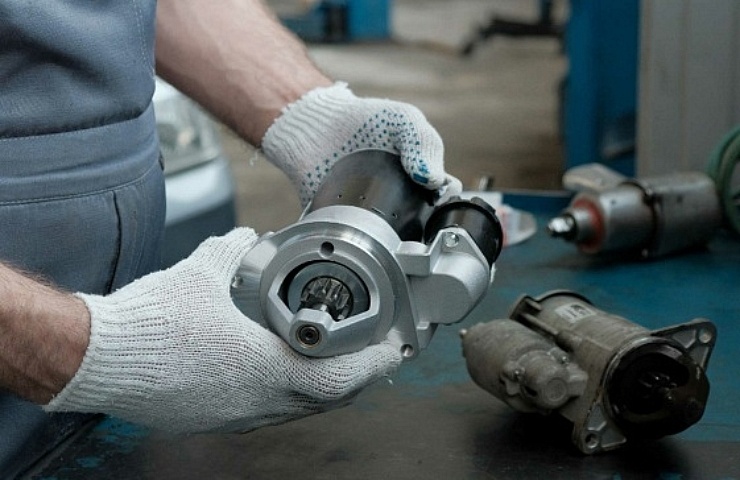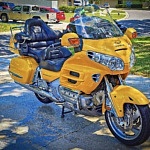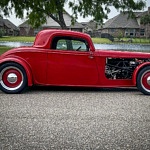Contents
What Is a Solenoid?
Strictly defined, a solenoid converts electrical energy to mechanical energy. In the context of a complicated machine like a car or truck, the solenoid is an electromagnet that uses windings of wire around an armature of magnetic metal. As the wire coils are energized or de-energized, the armature can quickly move from one position to another. This moving piece of metal is typically connected to something that needs physical movement to be controlled.
There are two typical places you’ll find a solenoid in a car: in the engine’s starter and automatic transmission.
Starter Solenoid
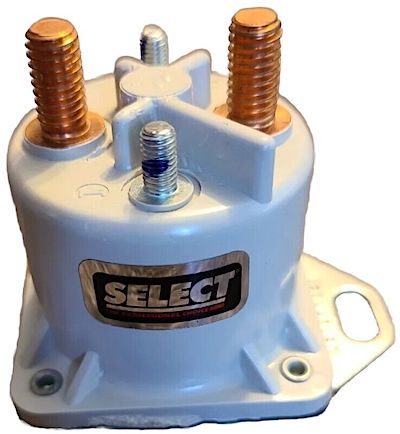
Borg-Warner Select starter solenoid
An engine requires a lot of energy from the 12-volt battery to turn via the starter motor. But running that much current into the passenger compartment is not a good idea—a short circuit could cause a serious shock to the driver.
With very small voltage, the ignition circuit uses the turn of a key or push of a button inside the vehicle to actuate the starter solenoid. This closes a large set of contacts, allowing all of the battery voltage to flow to the starter. The starter solenoid, which looks like a small metal cylinder, is usually mounted next to or on the starter.
Automatic Transmission Solenoid
A computer controls how and when each gear ratio is engaged with the one or more solenoids located within a modern automatic transmission. These solenoids are electrohydraulic, which means they use electricity to open or close valves, control the flow of transmission fluid through the transmission, and select the appropriate gear ratio. Other solenoids within the transmission control how and when the torque converter locks up, so transmissions often have several solenoids bundled together in a solenoid pack.
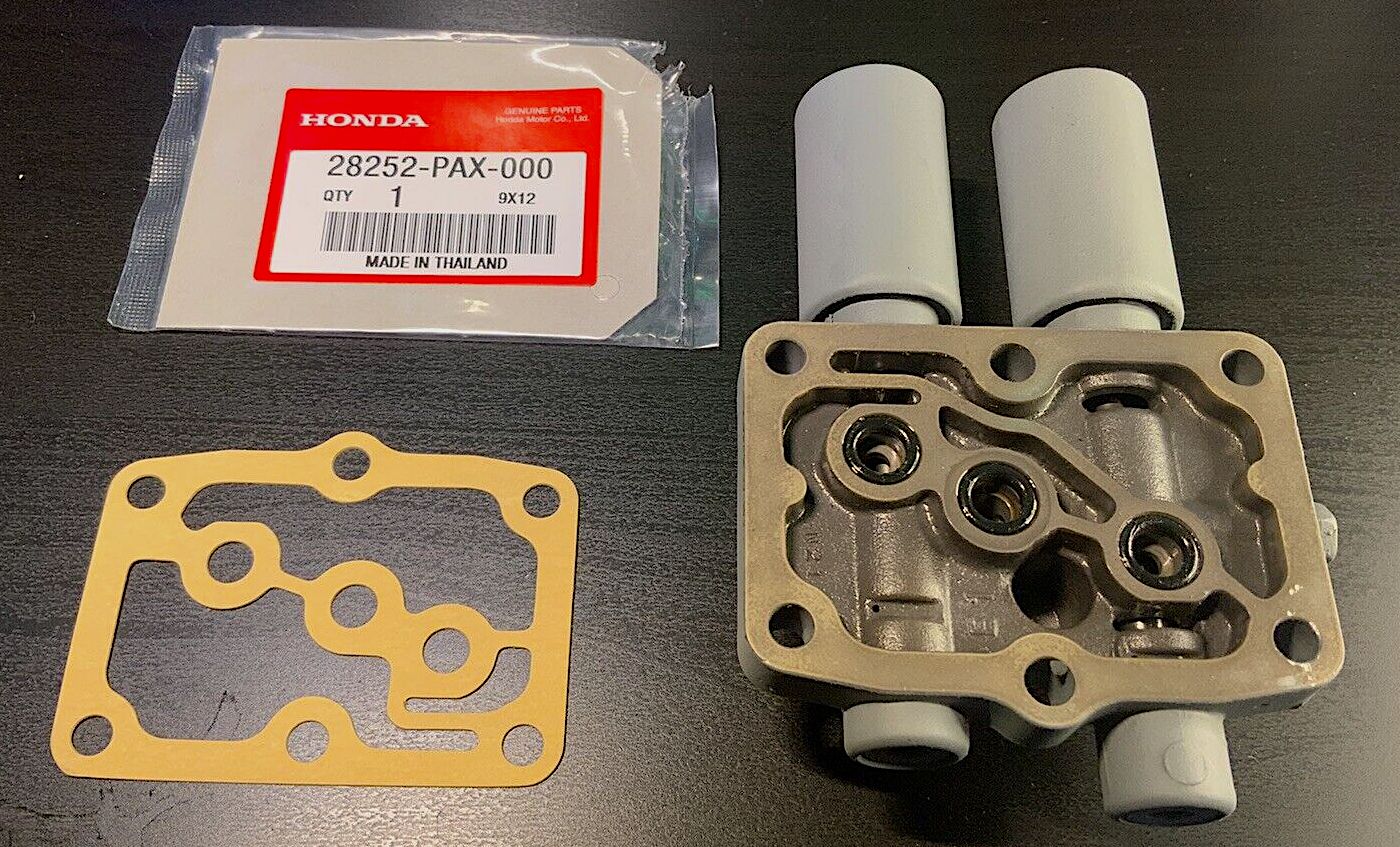
Dual linear OEM Honda transmission solenoid
Diagnosing Solenoid Problems
Like any other mechanical device, a solenoid is subject to wear over time, and any number of minor issues can cause it to fail.
Starter Solenoid Problems
Often, an owner only thinks about a starter solenoid not when it fails, but when it clicks. If you try to start your vehicle and only hear rapid clicking from under the hood, this is a telltale sign that your starter solenoid is failing to turn the motor. The problem in this case is either within the starter motor, or perhaps there is insufficient charge from the battery to turn the engine.
Shop now for startersIf you try to start the vehicle and the engine doesn’t turn over but you don’t hear clicking, there is likely a problem with the starter solenoid or the wiring between the ignition switch and the starter.
Transmission Solenoid Problems
Automatic transmission problems can often be traced to issues with one of the transmission solenoids. Most modern vehicles will illuminate a check engine or transmission warning light if a problem is detected. A shift solenoid or torque converter solenoid can stick in either an open or closed position, causing one of several issues:
- Clunking when shifting
- Transmission not shifting out of neutral
- Hard, sudden shifts
- Engine revving high even when brakes are used
- Transmission not shifting between gears
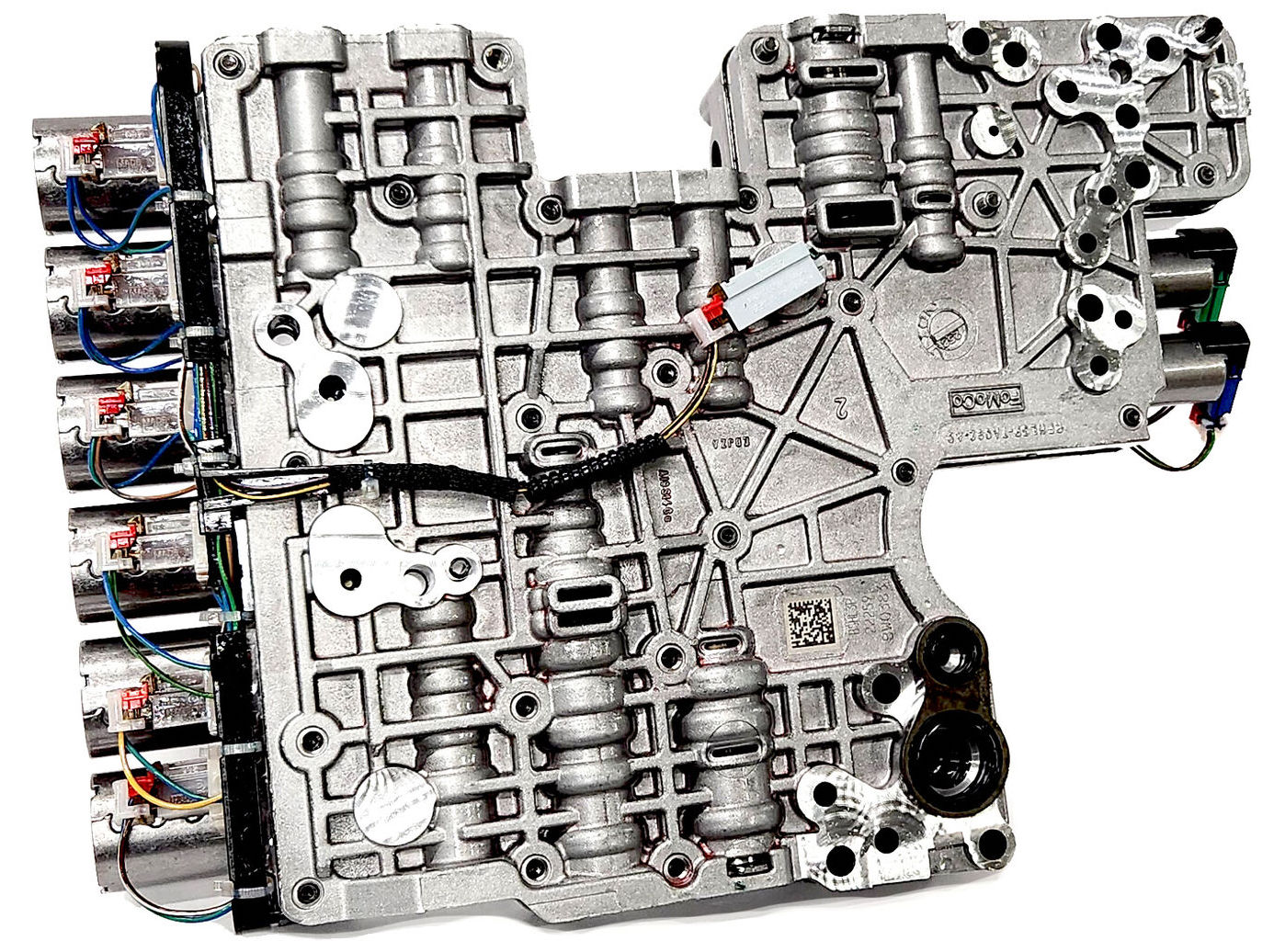
2017 Ford F-150 valve body
Each of these symptoms can point to a sticking, worn solenoid. Often these issues are caused by old, dirty transmission fluid. Debris can clog the delicate passageways within a transmission valve body, which prevents the solenoid from actuating properly. This is one of the prime reasons regular fluid changes are critical for an automatic transmission.
Cost to Replace a Starter Solenoid
In many cases, if you’ve diagnosed that the starter solenoid has failed, it may be worth replacing both the starter and the starter solenoid at the same time. The starter solenoid is often sold as part of the same unit and in the same package as the starter. The labor costs or time involved will be roughly the same.
Shop now for starter solenoids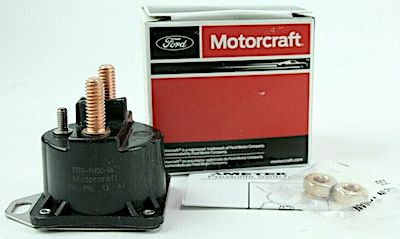
Motorcraft starter solenoid
In most cases, a replacement starter and solenoid will cost between $100 and $400. Labor costs vary by region, but most shops will replace the unit for two to three hours of labor, adding another $150 to $500 to the job. On many older cars, replacing the starter is a relatively simple job for an experienced home mechanic.
Cost to Replace a Transmission Solenoid
Replacing a transmission solenoid is more expensive than replacing a starter solenoid. The solenoids are usually part of a pack and cannot be replaced individually.
For some vehicles, the solenoids are fully integrated into the valve body, which must be replaced as a single unit. The costs can thus vary wildly, ranging from $150 to over $1,000 for the part.
This does not include labor costs, which start at about $300. Transmission fluid would need to be replaced as well. The transmission valve body and associated solenoids are delicate, sensitive components. As such, replacement is not an ideal job for an inexperienced mechanic.
Shop now for valve bodies
